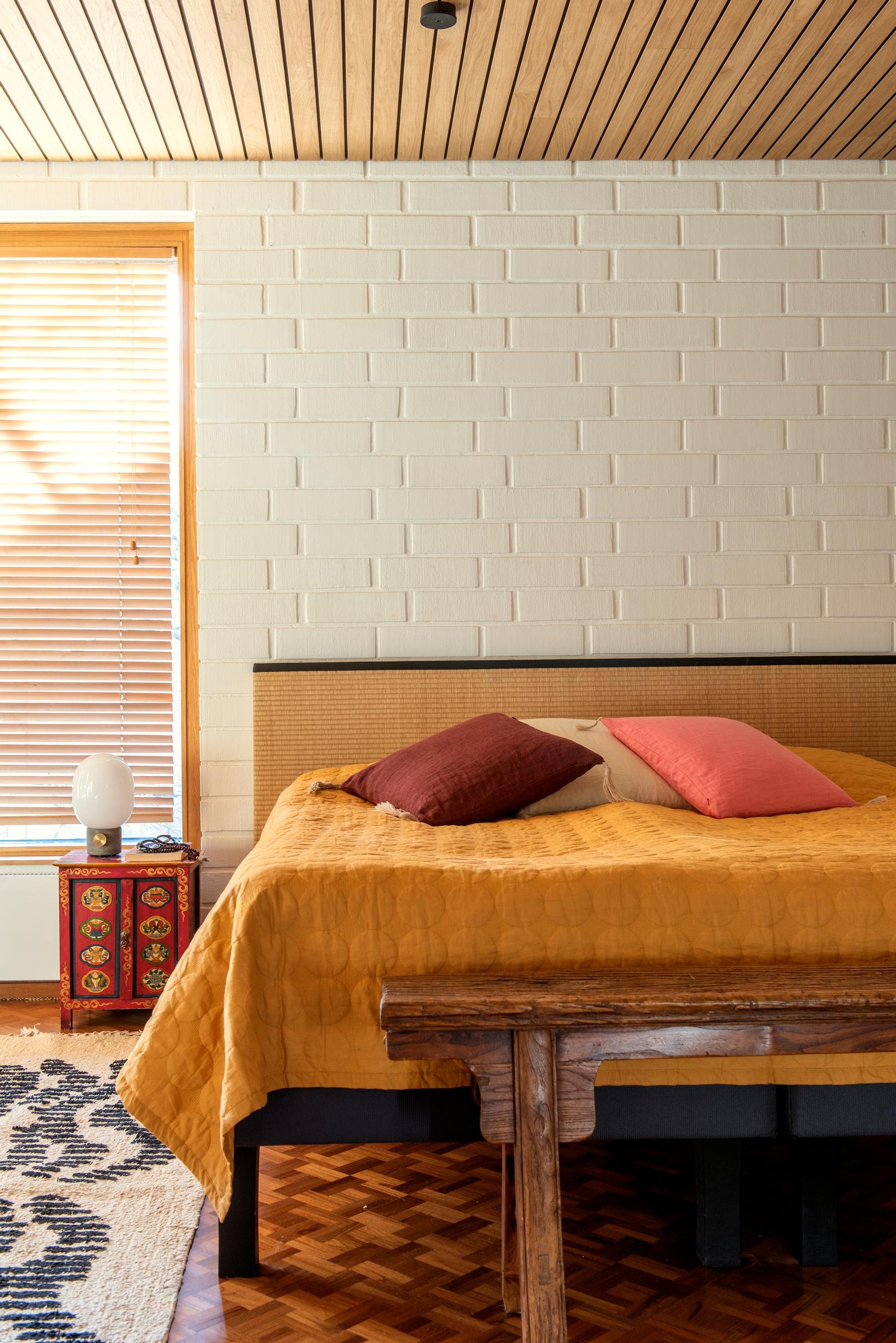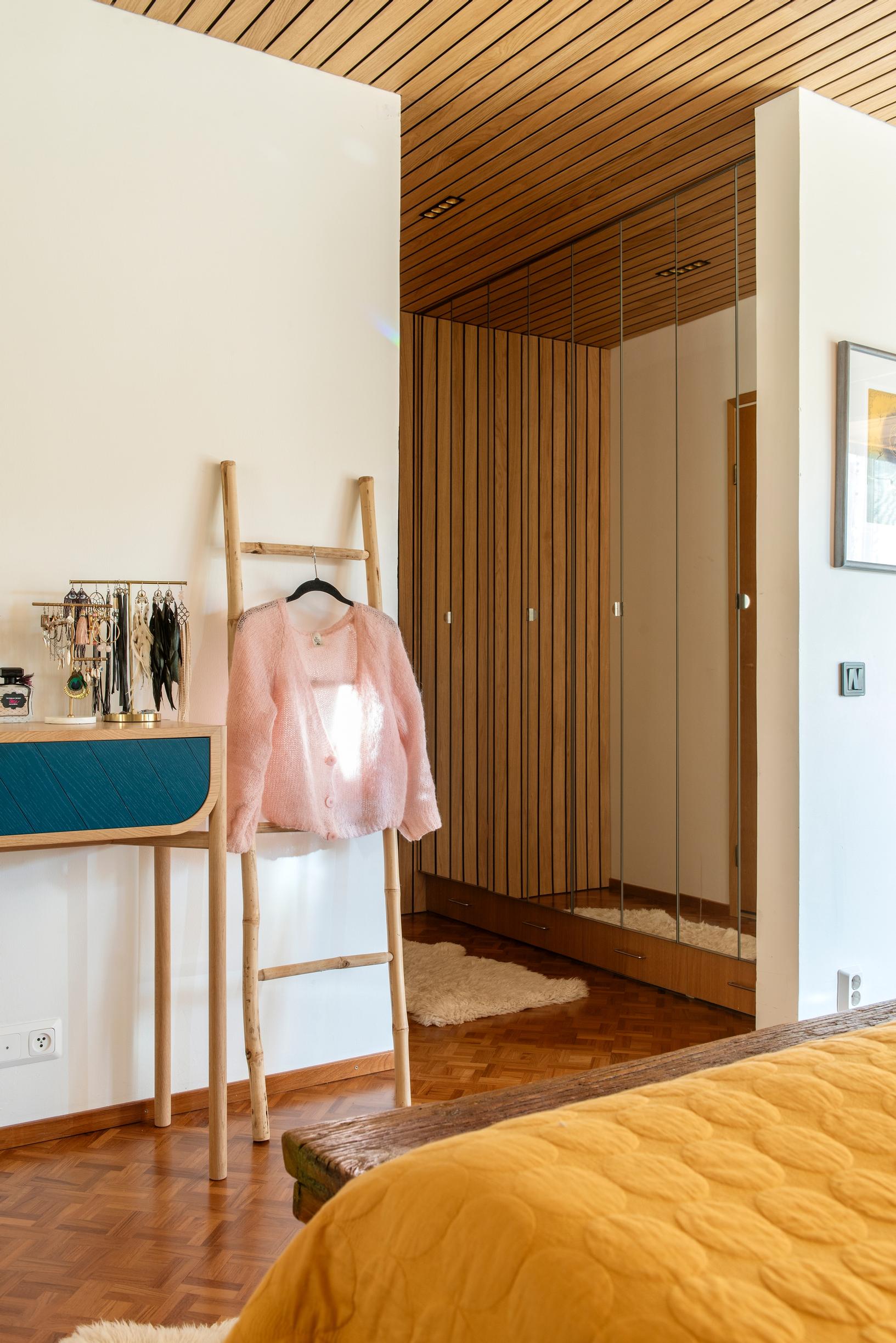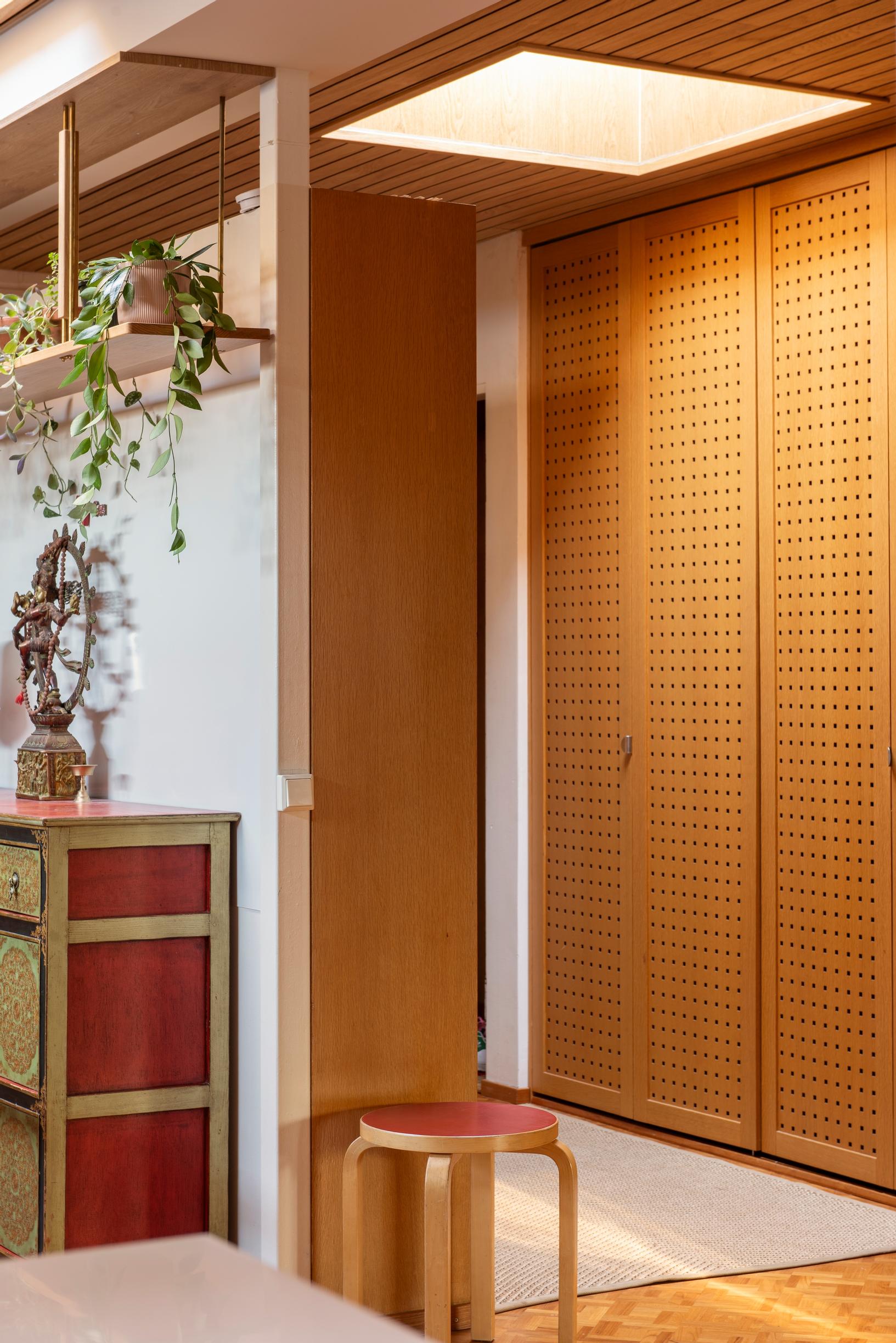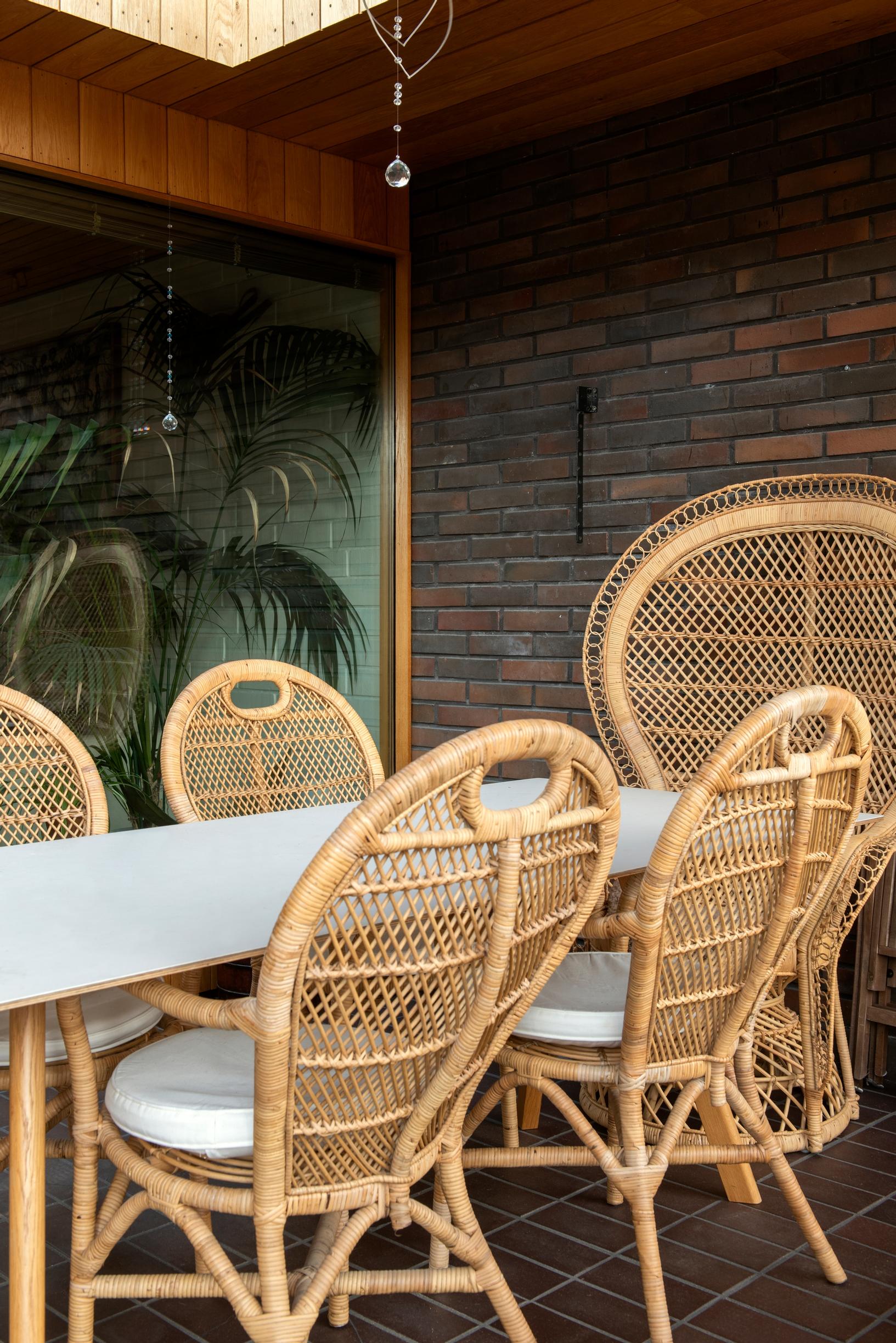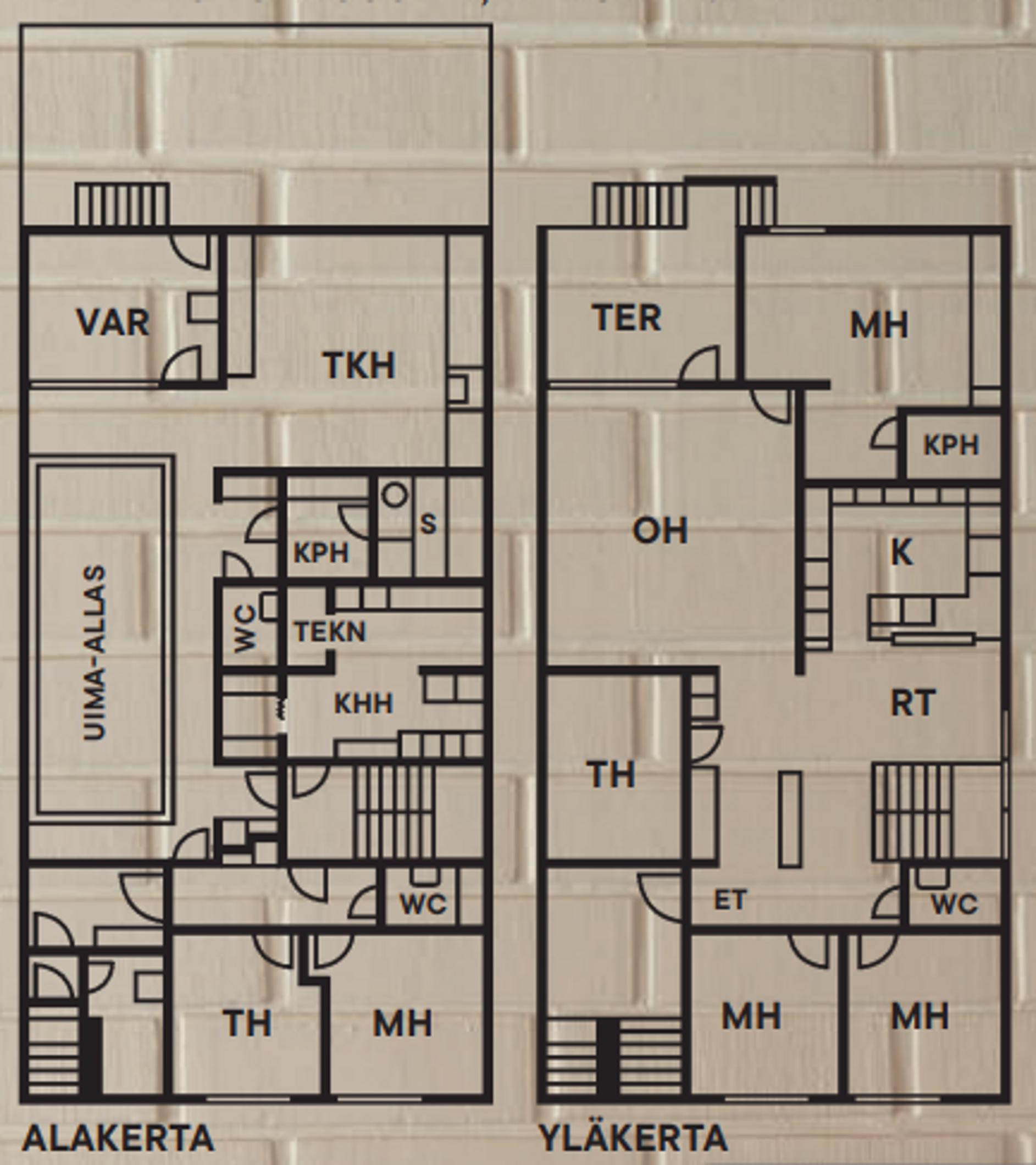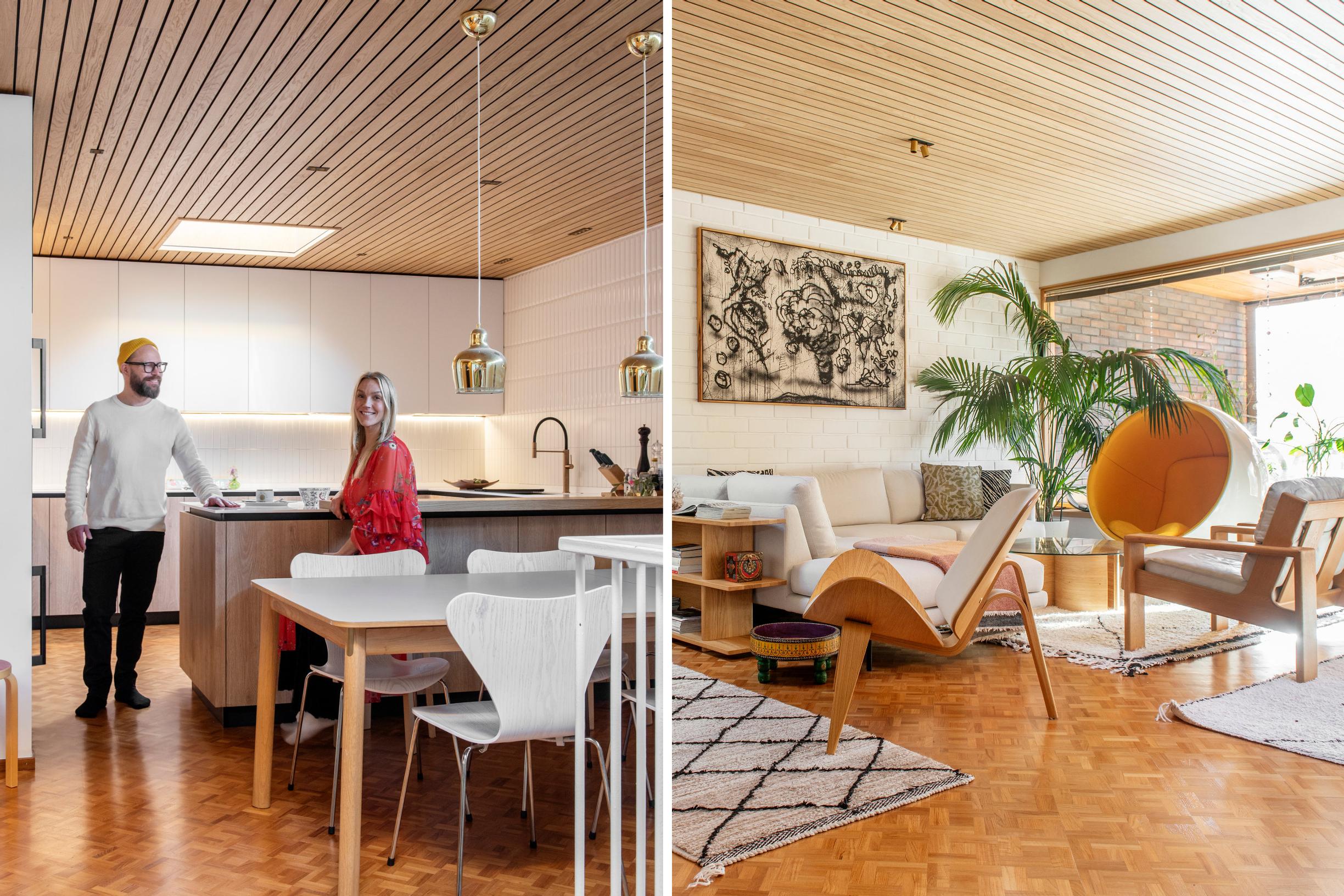
Burnout and a strange smell: how a hidden flaw sparked a surprise 1970s home renovation
The atmosphere recalls Villa Mairea. In the peaceful home of Tunna and Jenni Milonoff, you’ll find warm wood surfaces and perfect spaces for both of them to unwind. “Now we have a family-friendly kitchen with enough space for me to dance if I want!”
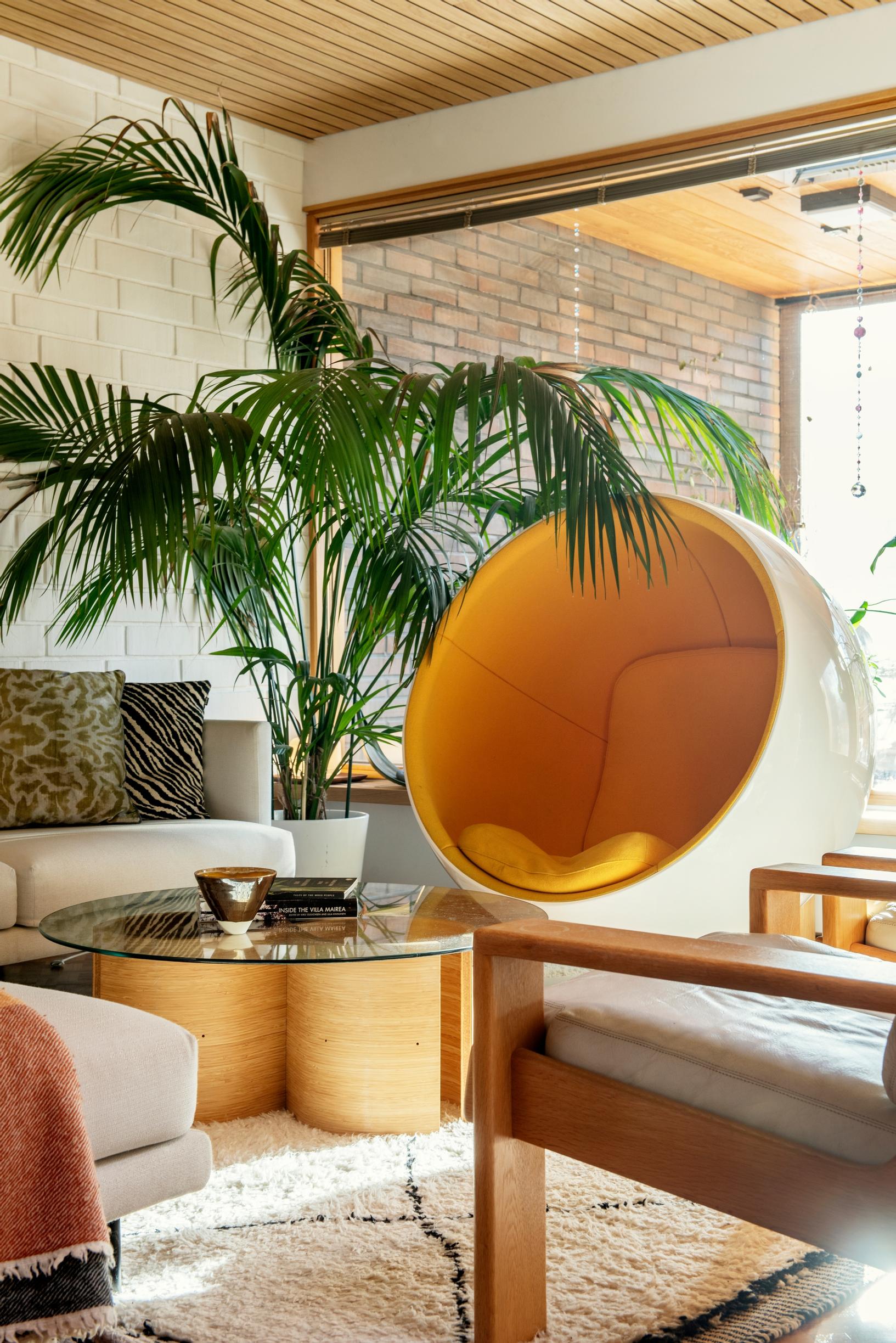
Tunna and Jenni Milonoff were enchanted by the original ceiling paneling when they purchased their 1970s row house in Helsinki’s Oulunkylä neighborhood in 2020. However, the ceiling structure was found to be problematic and had to be removed, forcing them to give up a cherished feature and undertake a demanding, extensive, and costly renovation.
The couple enlisted designer Oskari Oranen for renovation design and project management—this was already their third collaboration, as they knew each other from youth graffiti circles. Because the interior ceiling was being renovated, it made sense to update the built-in ceiling lighting and the kitchen at the same time. The main ideas—color scheme, materials, and atmosphere—were quickly agreed upon, but fine-tuning details and keeping costs under control took more time.
Now, upon entering the house, you see warm-toned wood surfaces harmonizing with each other and a clear view straight through. The calm, cohesive atmosphere is exactly what they were aiming for.
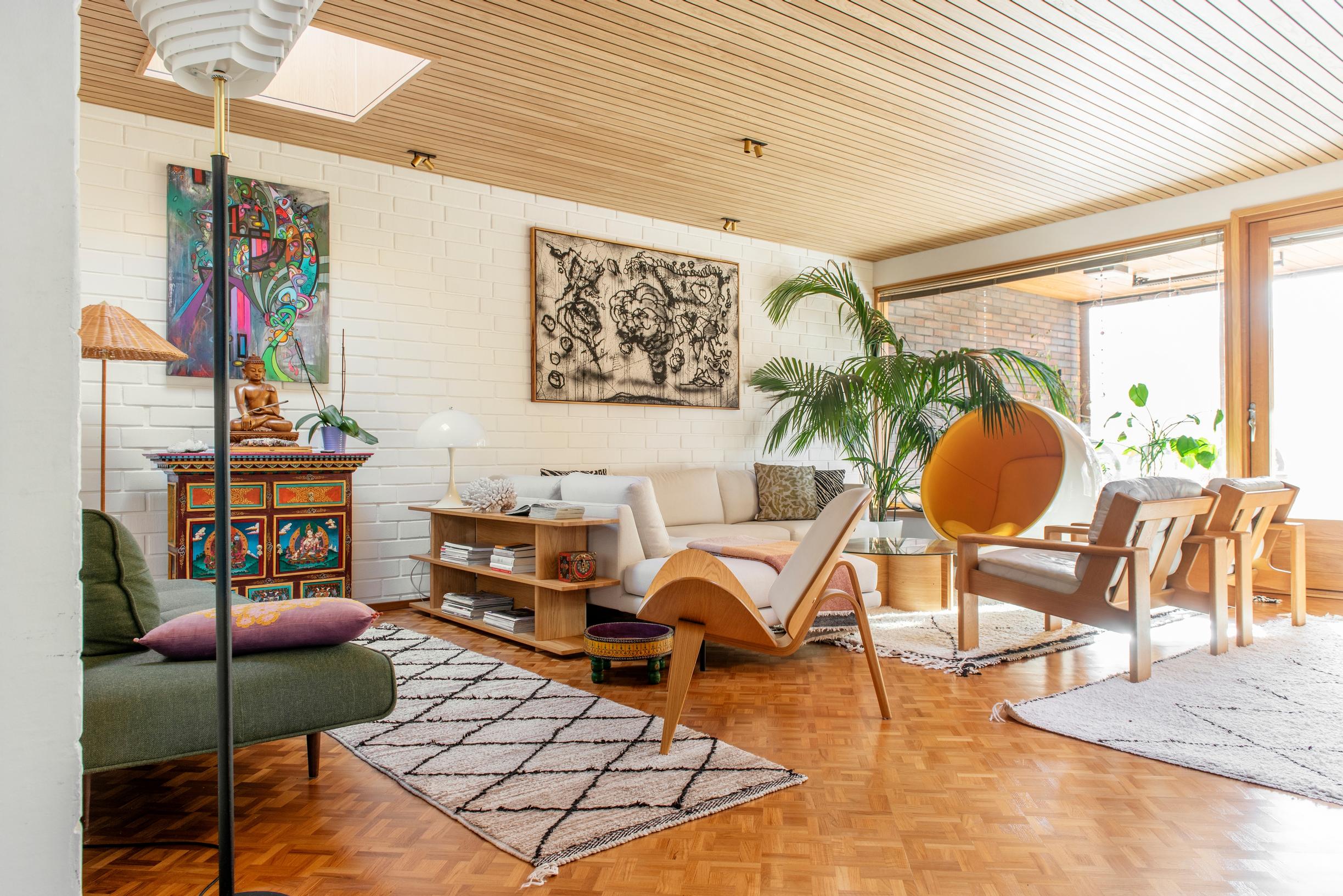
residents Madventures TV series co-creator, director, and nonfiction author, Tunna Milonoff, and yoga and circus instructor, part-owner of Joogafestival Helsinki, Jenni Milonoff, along with their two school-aged sons. Instagram: @tunnamilonoff, @jennimilonoff.
home A brick row house built in 1974–75 in Helsinki’s Oulunkylä neighborhood. The total area is 300 square meters (approximately 3,230 sq ft).
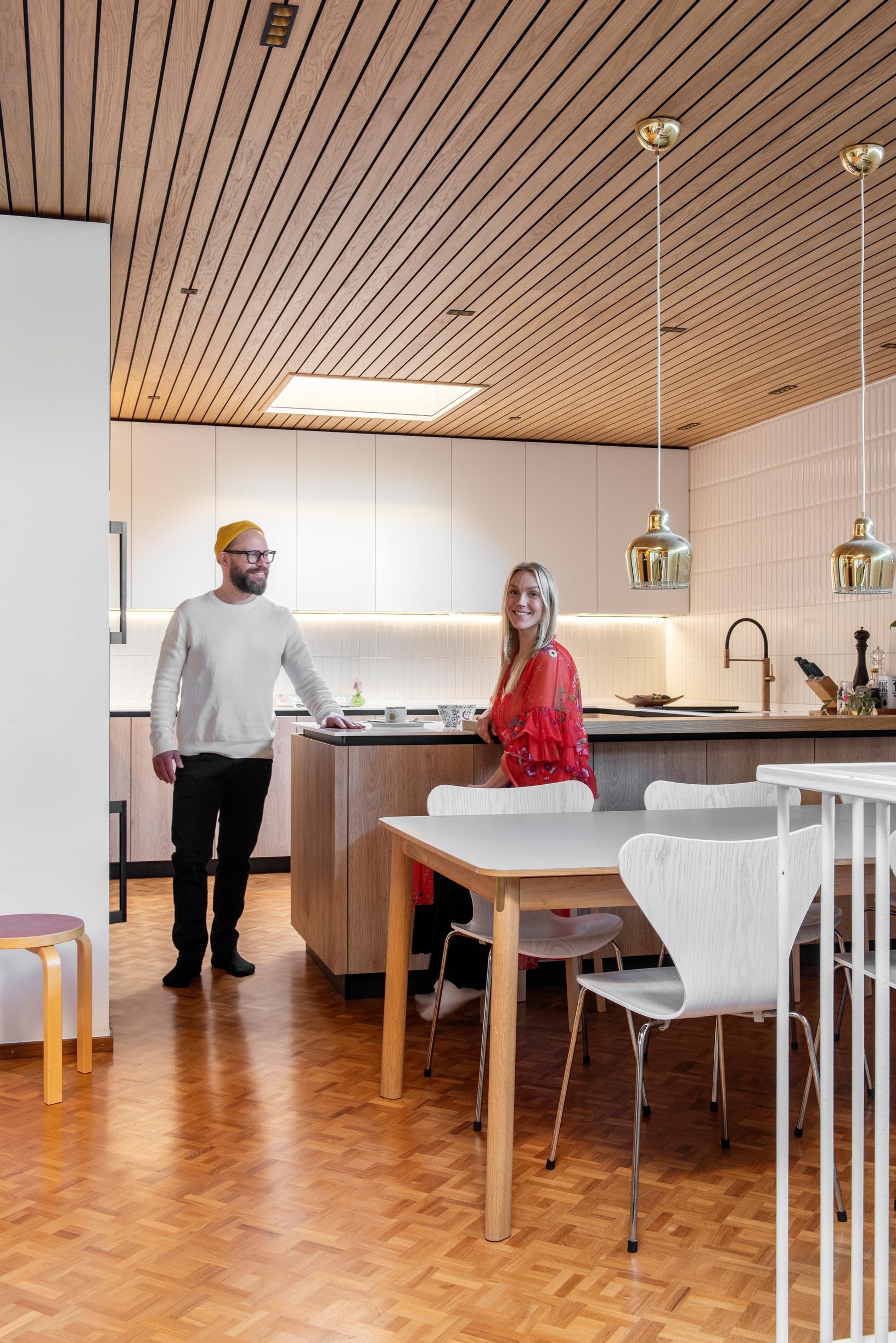
What’s the best aspect of your home’s architecture?
Tunna: When we bought the place, we were captivated by its Villa Mairea vibe and the 60–70s mid-century modern feel. We loved the original solid-wood interior doors, the wooden accordion door in the living room, the wood-paneled ceiling, and the original-style parquet.
What was the main reason or goal for the renovation?
Tunna: Sometimes we picked up an odd, unexplained odor that bothered us. We suspected the ceiling structure because neighbors had already replaced theirs. When we opened it up, we discovered a flawed vapor barrier that allowed smells from the building materials to seep through. Our chief goal was fresh, clean indoor air, and we also ended up cutting our heating costs in the process.
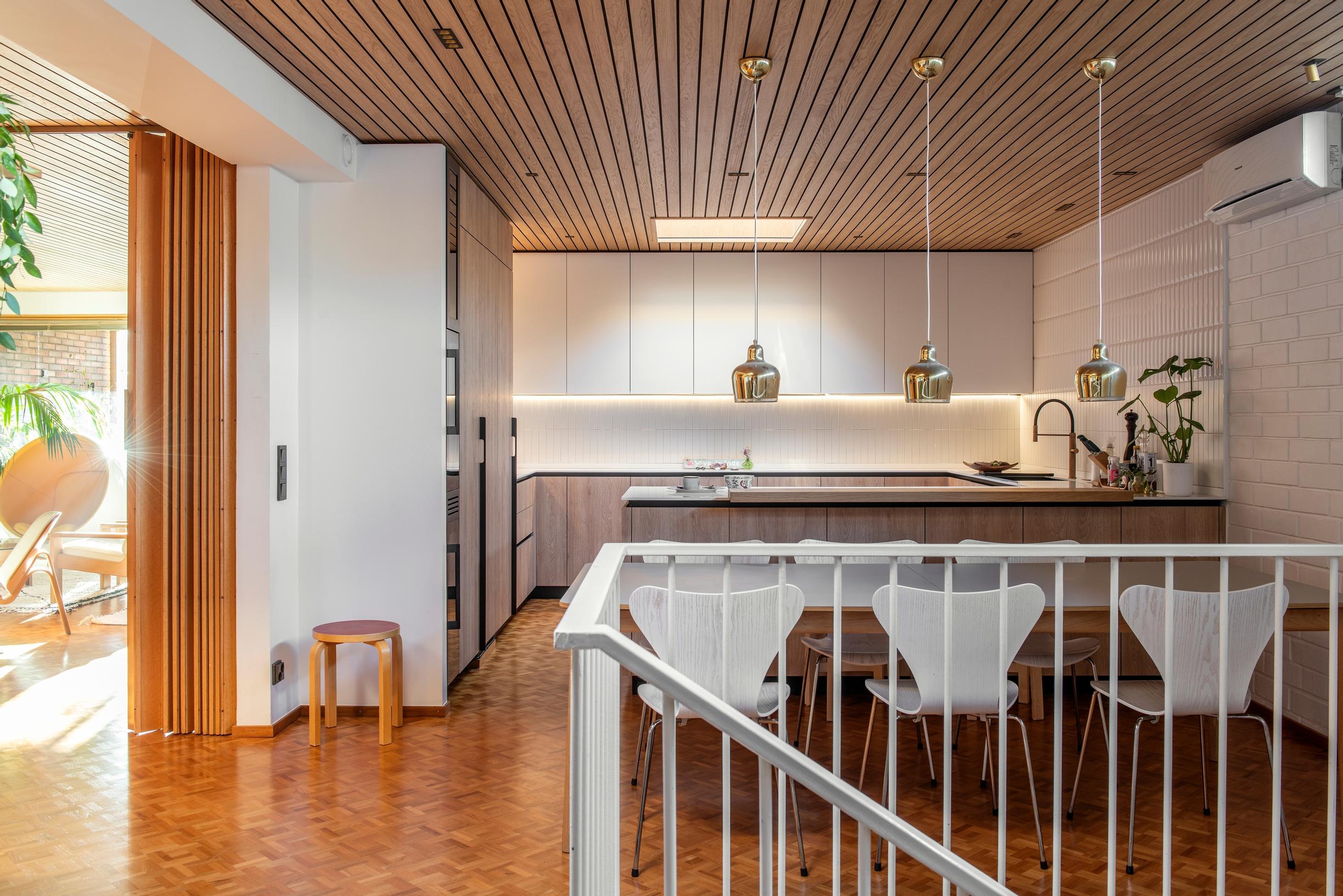
Why did the renovation extend to the kitchen as well?
Jenni: We love cooking, and the kitchen installed by the previous owner wasn’t practical for us. When the old ceiling was removed, we had to pull out the cabinetry, so it was the perfect moment to upgrade. We closed the doorway from the kitchen to the primary bedroom. Now the new kitchen is open and spacious. Its potential has finally surfaced, and the crisp lines make it feel bigger. Our old two-person kitchen is now a full family kitchen—there’s even room for me to dance if I want!
“My nervous system is sensitive, and rest has always been especially important to me. Home is the cornerstone of finding tranquility.”Tunna Milonoff
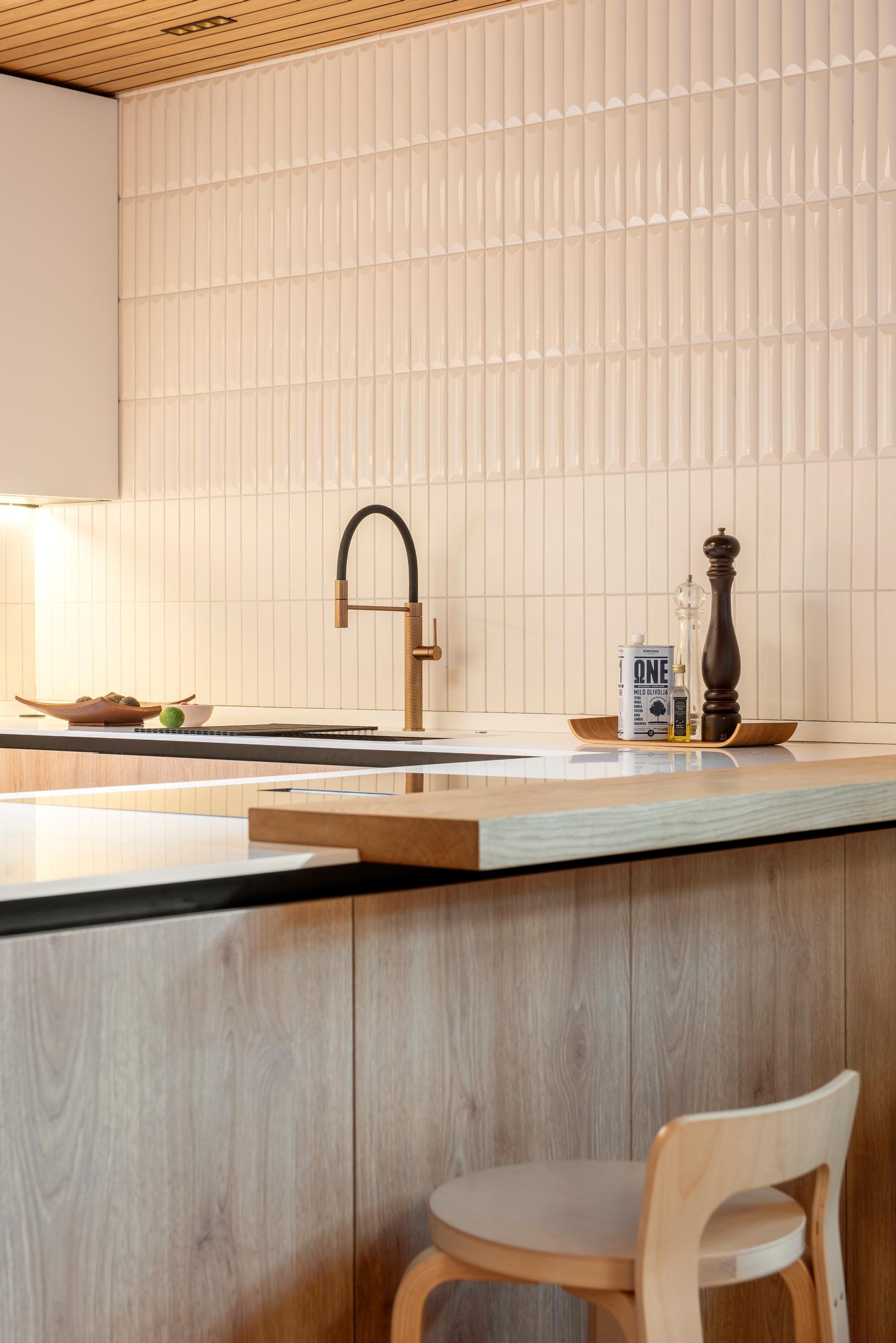
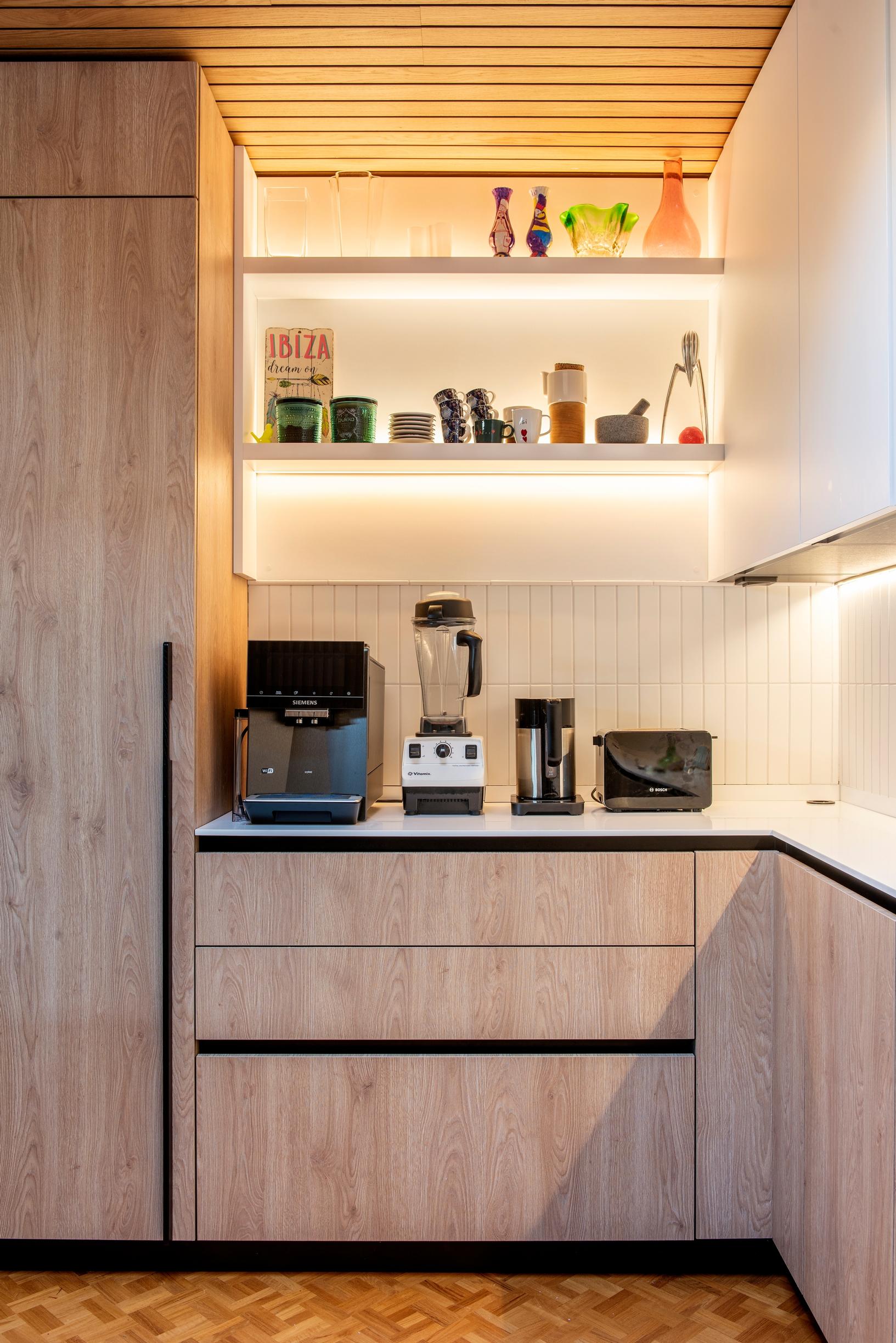
What was the renovation process like?
Tunna: The renovation definitely slowed my recovery from burnout—or at least brought back its symptoms. Once your nervous system has burned out, it becomes hypersensitive and warns you when your stress levels rise. Oskari helped us keep our eyes on the outcome we wanted, even when the project felt demanding.
What role does your home play in your recovery?
Tunna: My nervous system is sensitive, and recovery has always been crucial for me. Home is definitely at the heart of my relaxation and calm. I find tranquility in the balance and harmony of a space. For some reason, aesthetics have always soothed me. That’s why the shape and balance of furniture are so important. Materials matter, too—wood in particular has a peaceful effect. That’s why we insisted on keeping a wood-paneled ceiling. Wood also creates a softer acoustic environment, boosting warmth and serenity.
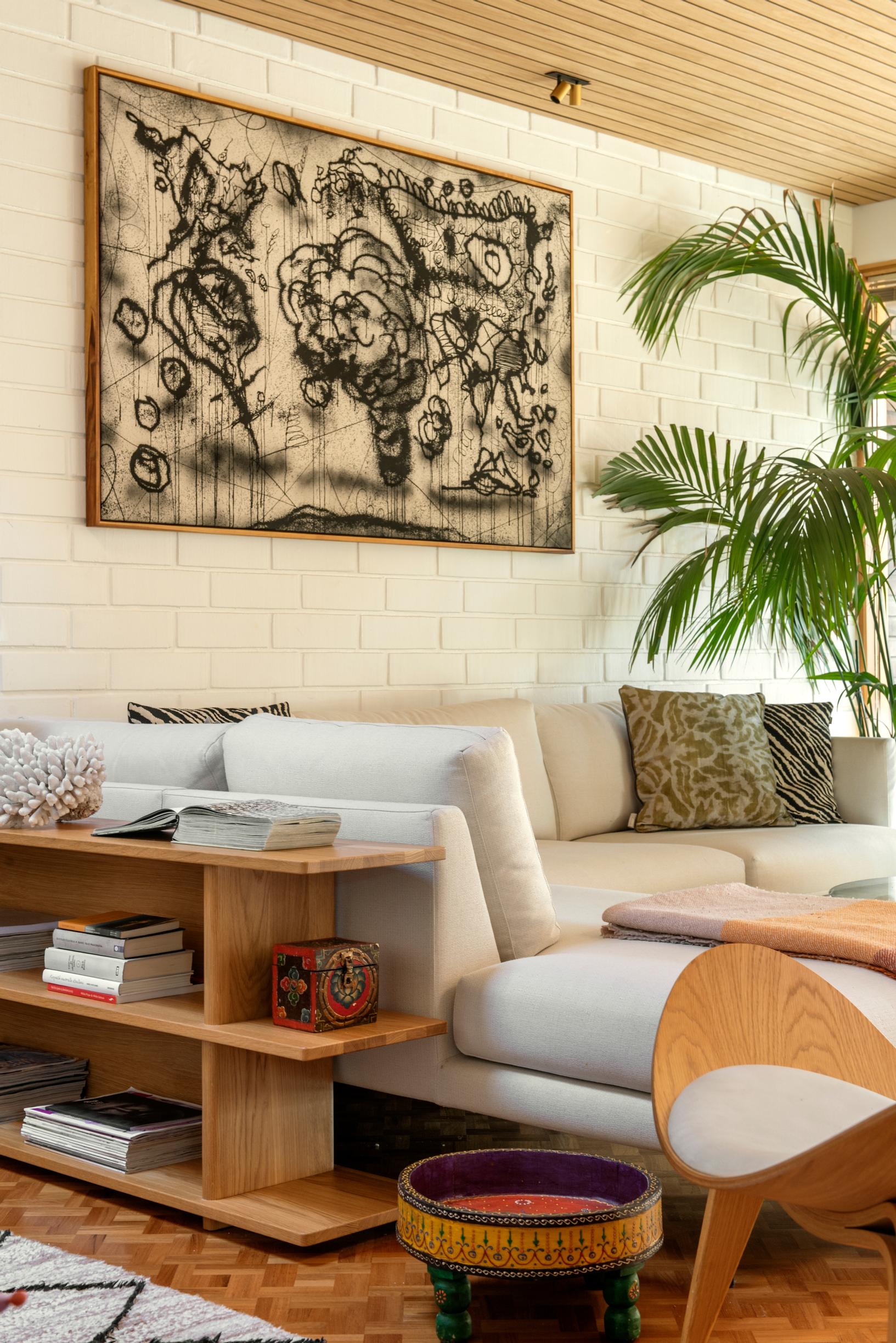
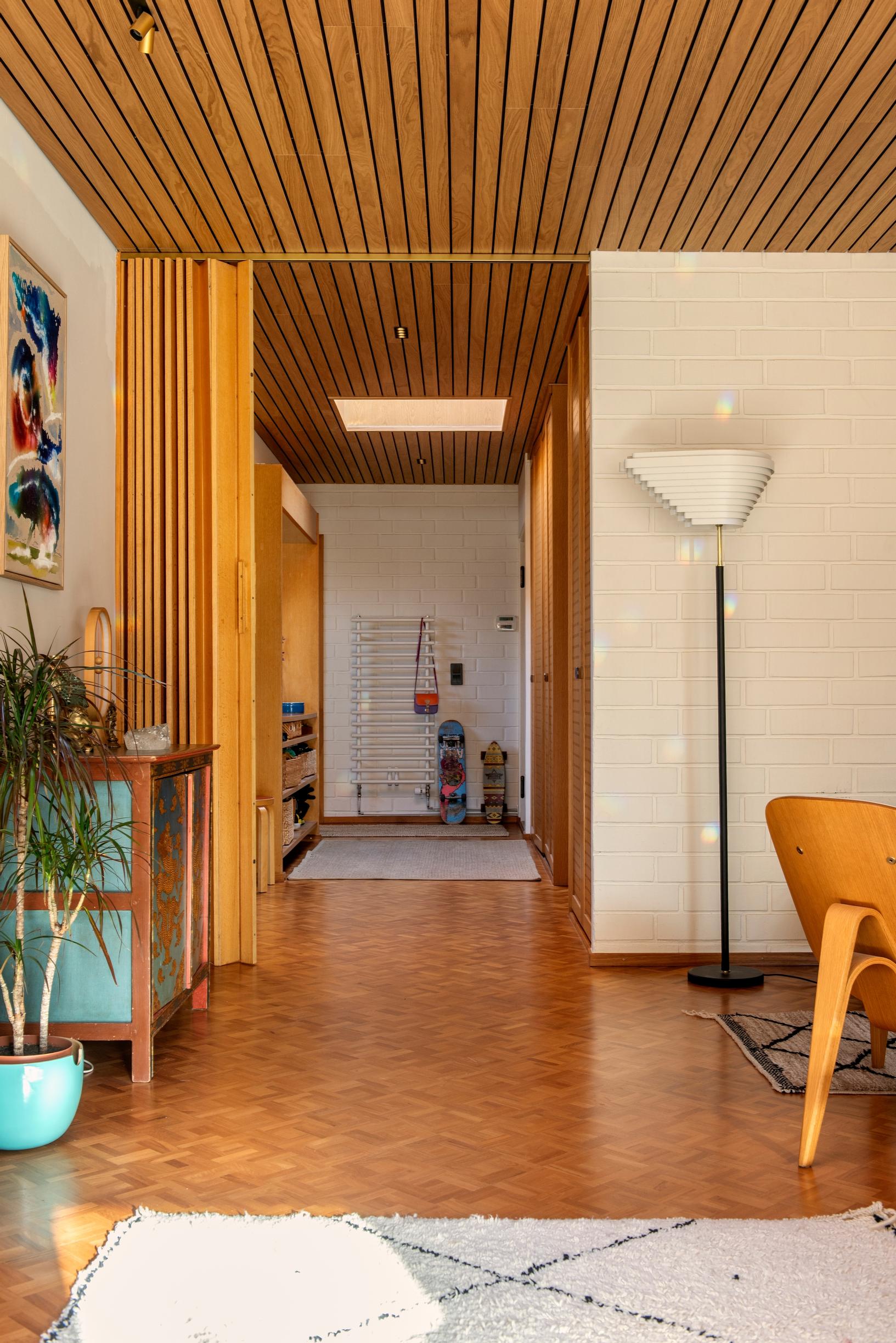
How did the renovation affect the ambiance of the home?
Jenni: Before, the house had a strong 1970s feel; now it has a lovely 1960s vibe and a mellow Japandi style that’s not too minimalist. We preserved the ceiling’s visual look—and thus the soul of our home.
Which solutions in your home turned out best?
Tunna: The kitchen—our home’s heart—was precisely tailored to us. The warm oak tones complement the house’s style and architecture perfectly, while the white upper cabinets boost brightness. The biggest question was how to balance the new white tiles with the existing white brick wall. We wanted a wave-like, Alvar Aalto-inspired tile that was practical too. Getting those three surfaces to fit together took care.
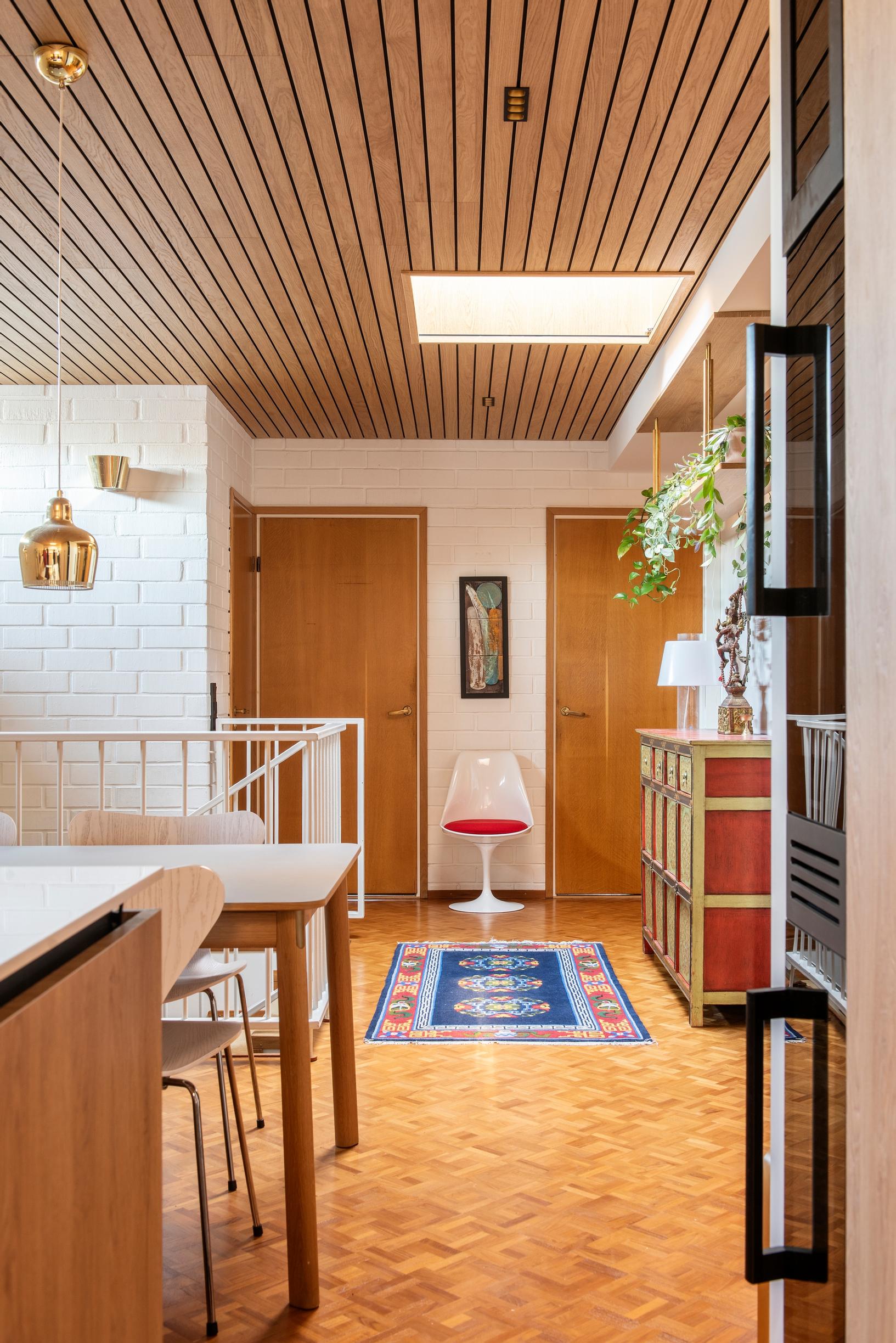
“Authenticity, stories, and sustainability have always been important to us in how we live. Classics are timeless.”
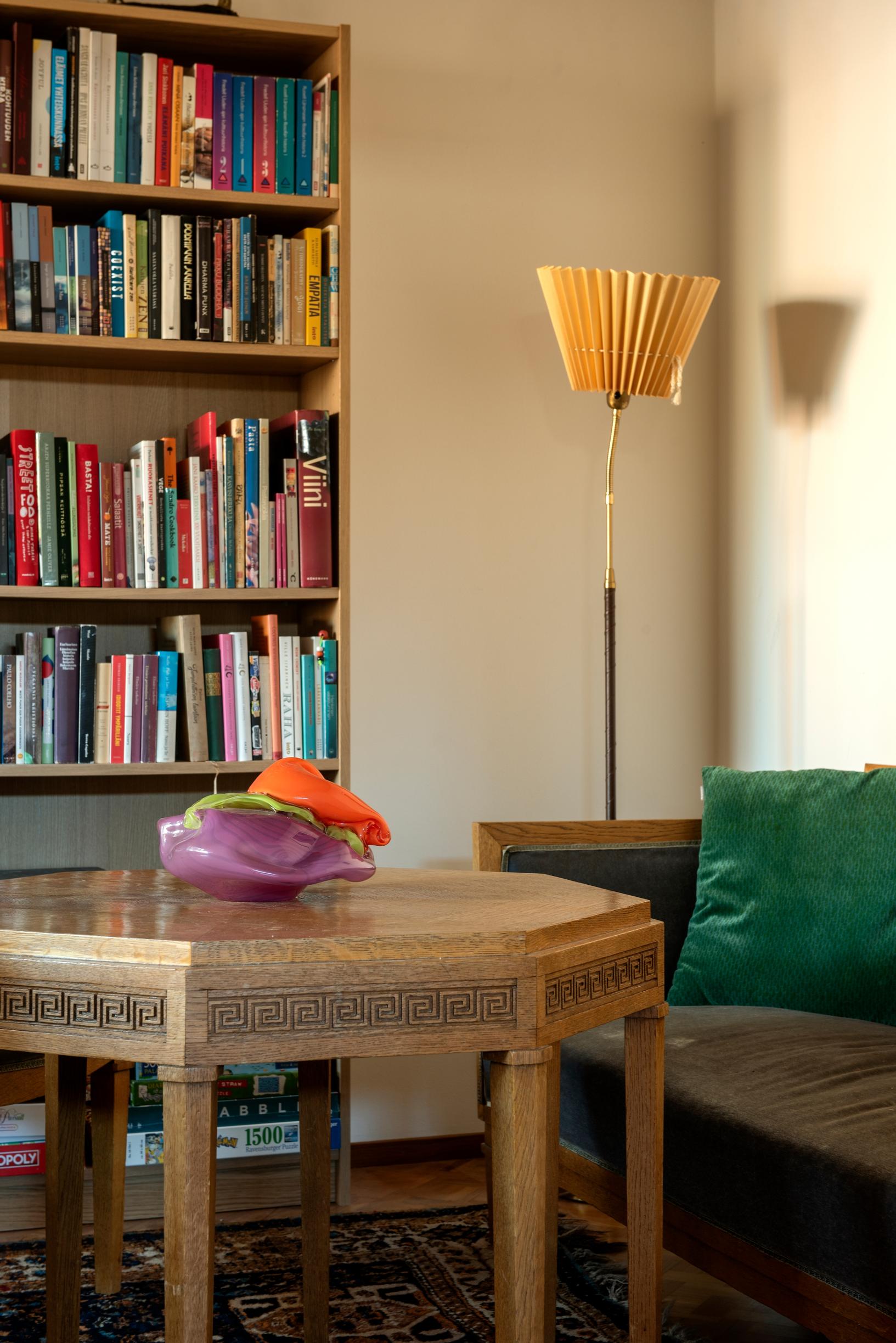
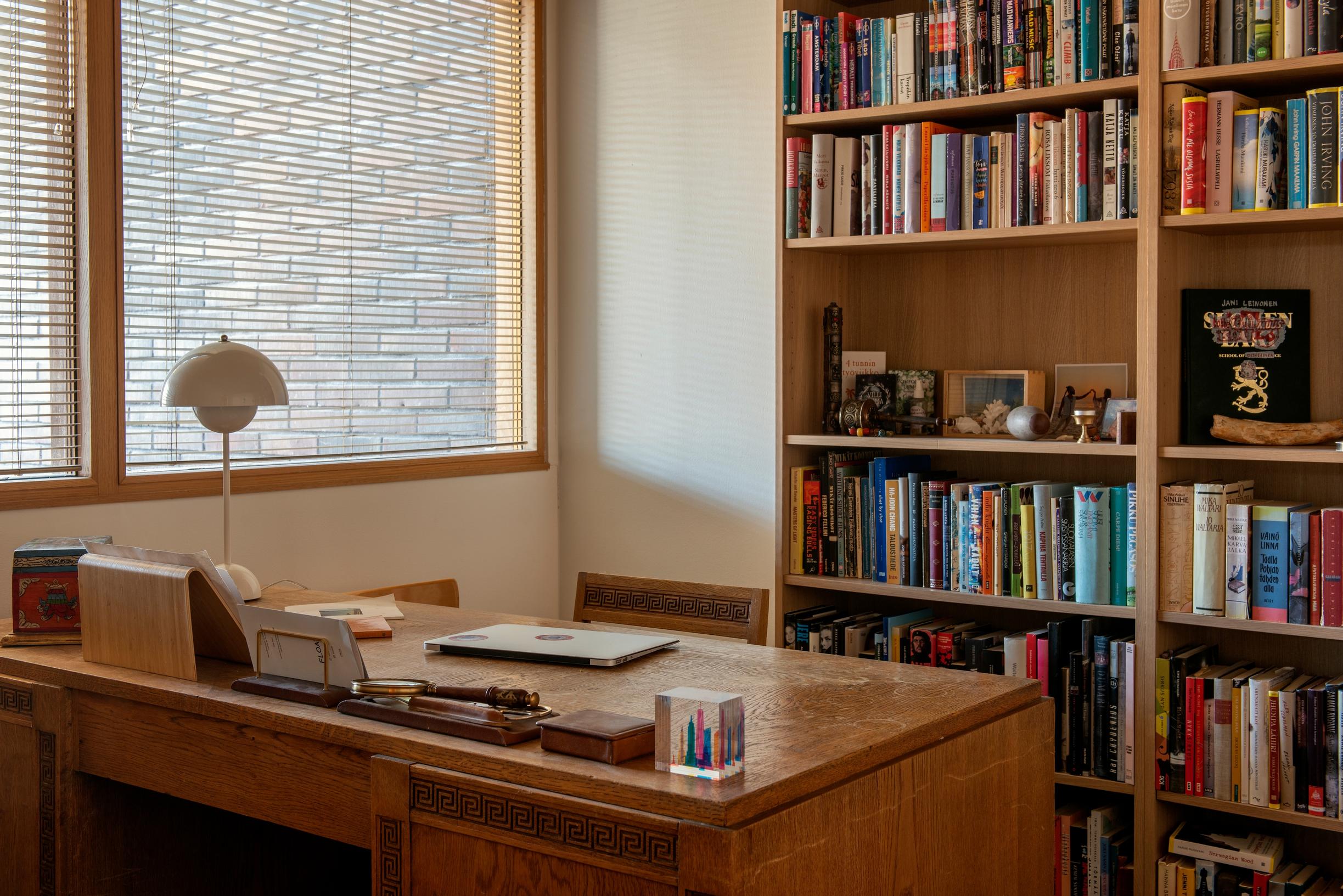
How would you describe your interior style?
Tunna: Authenticity, stories, and sustainability have always guided how we live. This house’s history is full of Finnish classics that never go out of style. Jenni grew up with Artek furniture, so it represents both stability and durability for her. I started out in film lighting, so I have a special affection for beautiful light fixtures.
Jenni: I have a fondness for rugs. People need softness against a hard world. We also incorporate eastern influences to soften the house’s clean lines. Traveling, seeing the world, and living in Goa have been a major part of who we are.
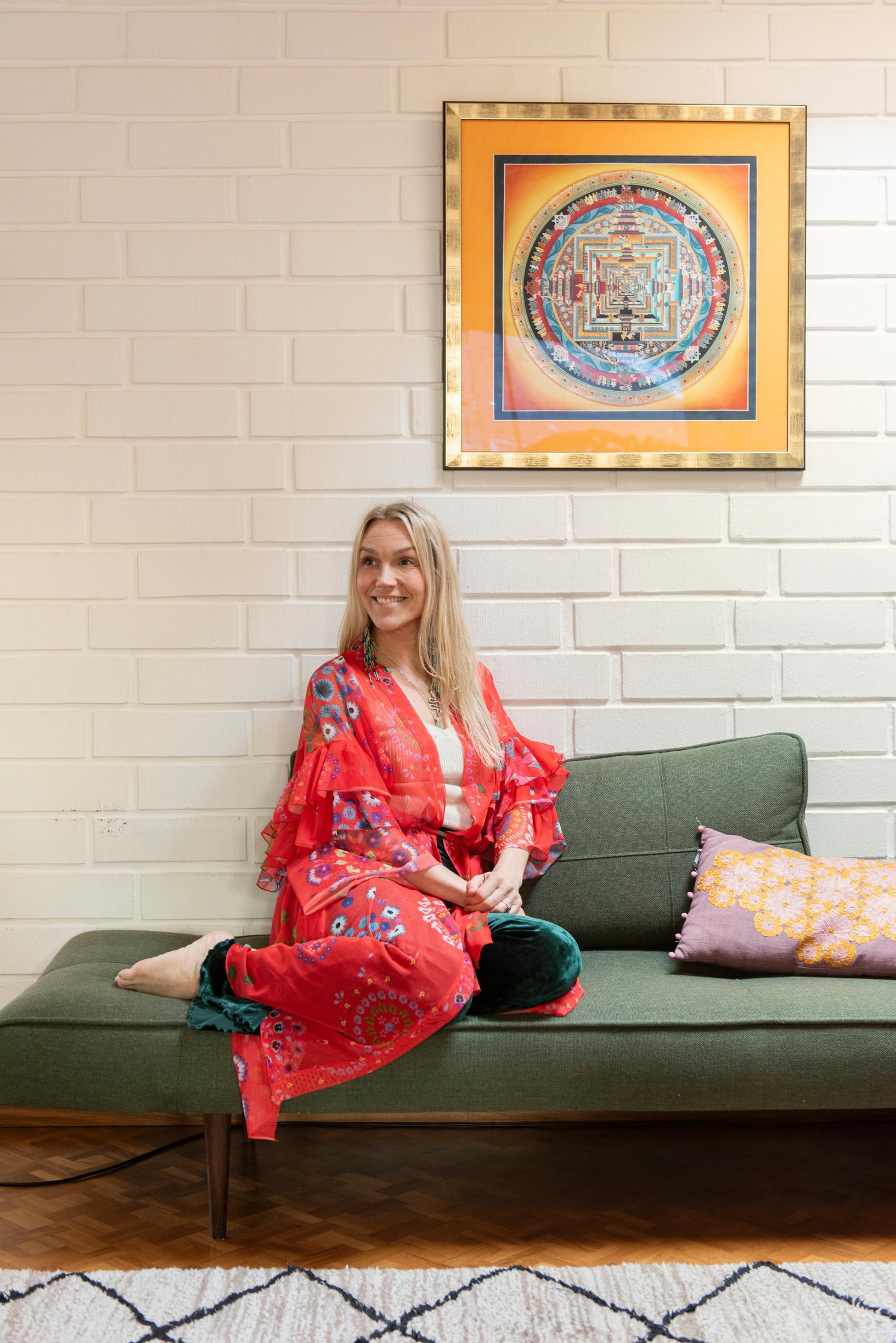
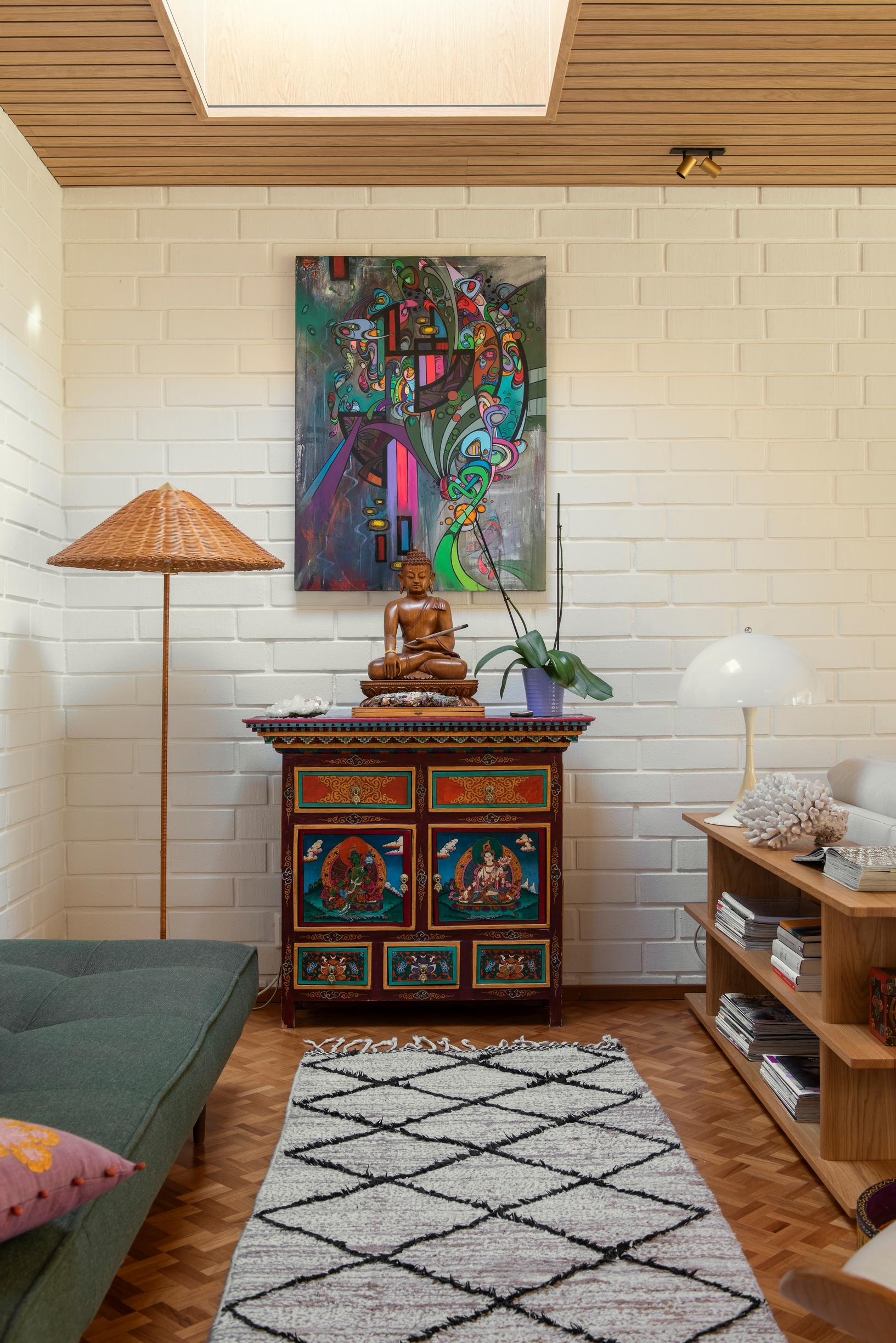
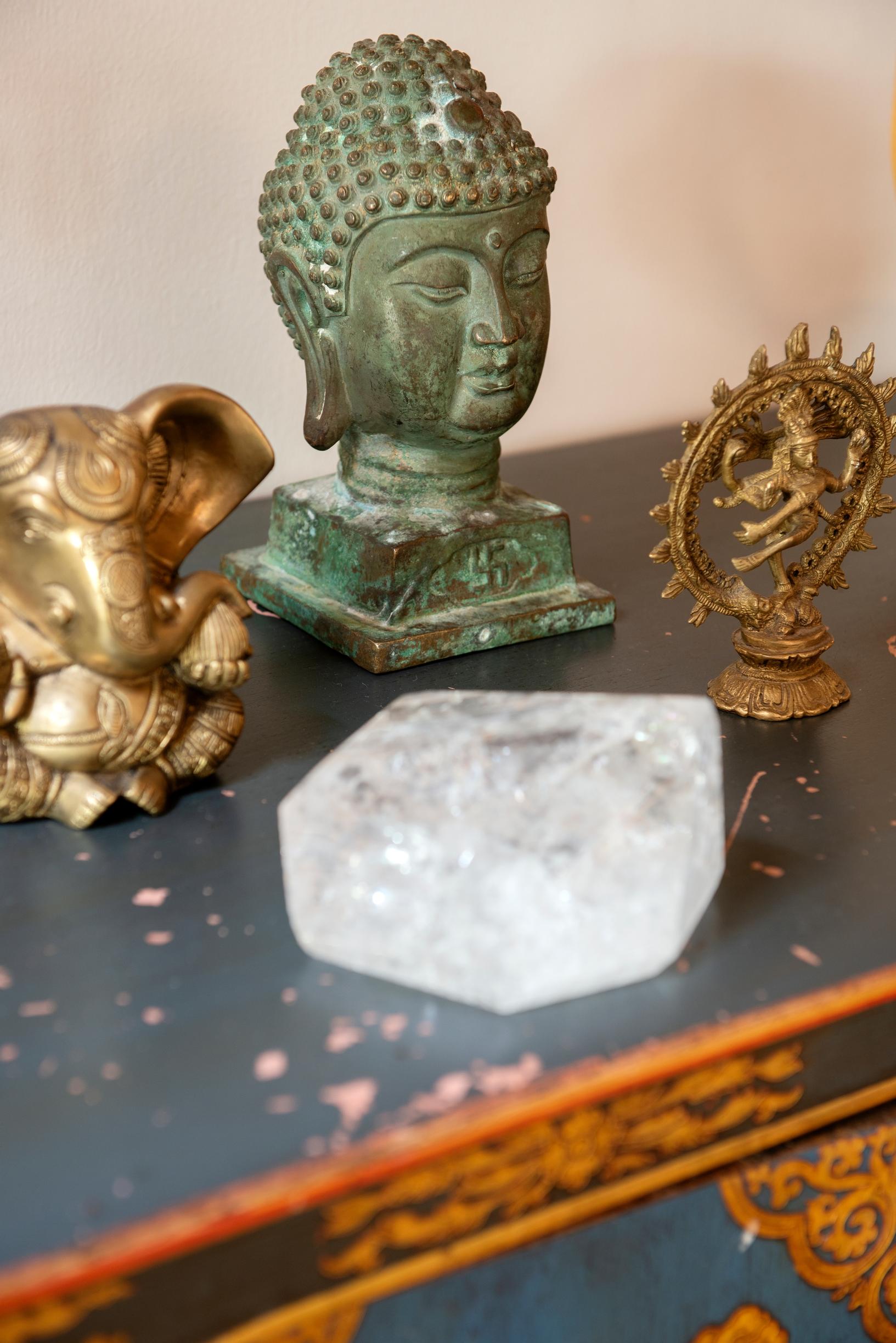
Which spot in your home do you love the most?
Jenni: Once the kids are off to school, I love having my morning coffee on the green sofa. Another favorite is the fireplace room, where I can escape to do yoga in peace.
Tunna: The Ball Chair, a dream I’d had for years, is like a private cocoon. It cuts down on outside noise significantly, and in its nest-like comfort, I always feel safe. It’s my ideal place to recharge.
